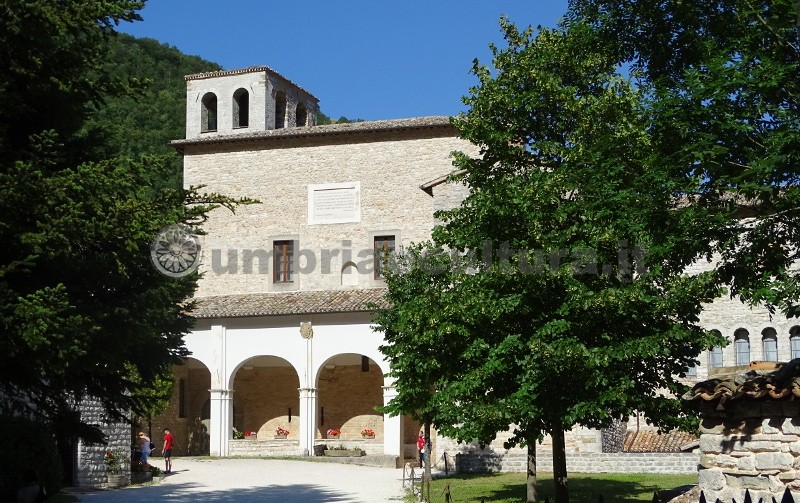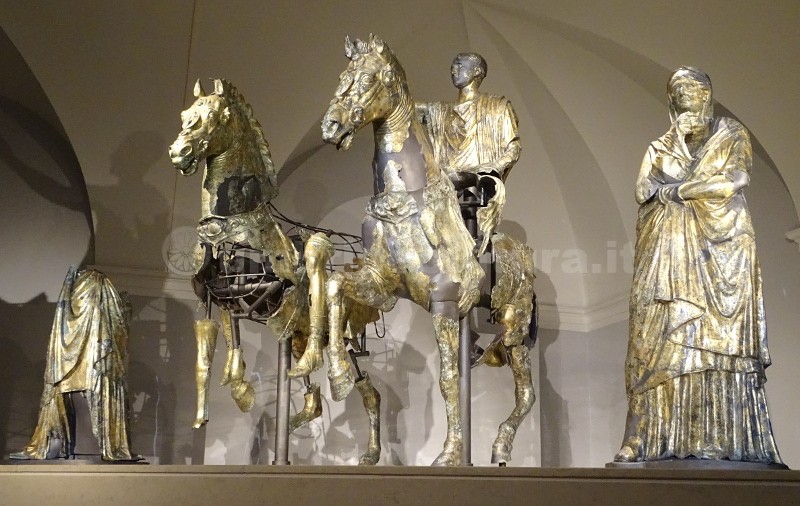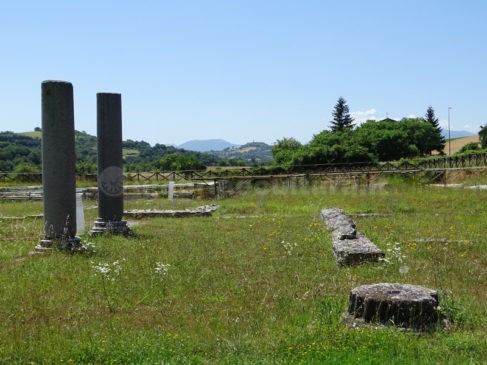The Monastery of the Holy Cross of Fonte Avellana, in the province of Pesaro and Urbino, is a very imposing structure, the result of a numerous series of extensions, on the slopes of Mount Catria.
The Monastery of Santa Croce di Fonte Avellana was founded around 980 by the first followers of Romualdo di Ravenna, like numerous other realities founded by him or by his followers between the current Marche and Umbria.
Romualdo was a Camaldolese monk, initiator of a radical reform movement that brought back to life, within the Benedictine tradition, the primitive spirit of monasticism in an age where the Abbeys were becoming more and more centers of power. This same project will continue the heir of Romualdo, Pier Damiani, great abbot of the eleventh century, represented in the bronze statue at the entrance.
To him we owe the construction of these buildings and the Scriptorium which bears his name. It was designed to take advantage of light as much as possible, light that was regulated and filtered by alabaster plates on the windows, in order to ensure the absence of shadows and reflections. There took place all the operations of making incunabula, such as the tanning of sheep and goat skins for parchments, the processing of inks, colors, foils for decoration. The Scriptorium also functioned as an astronomical clock: the mullioned windows at the top have alabaster plates of a few centimeters with small holes positioned on the basis of astronomical calculations relating to the path of the sun. The rays, filtering through the holes, indicated the exact time for prayer, praise and vespers and also the liturgical calendar, since the sun’s rays hit different points according to the seasons.
The destination of the manuscripts was twofold: the exchange with other scriptoria (Fonte Avellana had cultural relations with Monte Cassino, Pomposa, Bobbio), and the enrichment of the library: in this second case the manuscripts were transferred to the upper floor by a staircase.
The library, reserved and accessible only for study reasons, holds, despite the very serious losses, about 31000 volumes: from the invention of printing to 1950, unfortunately, the very rich collection of manuscripts, completely distorted since the fourteenth century, is found located in the most important Italian libraries but, above all, in the Vatican library, where the most precious codes are kept.
The books kept in the contemporary library, dedicated to Dante Alighieri, are recent: about 7000 volumes from 1950 to today. The library was born in an environment dating back to the first decades of the 11th century used as a guesthouse, the topic of hospitality in its various forms, to which San Benedetto devotes an entire chapter of his rule.
The position of the Ospitium is important, it is the most external environment compared to what was once the enclosure of the enclosure: by entering a small cloister, the pilgrims had the opportunity to arrive even at night without upsetting the rhythm of life of the community.
During the years of San Pier Damiani the cloister was erected, although it was antithetical to the concept of a hermitage because the meeting point of the monks, who, all gathered in the Statio, began singing the psalms and then continued in procession to gather in prayer.
The cloister is extremely interesting also from an architectural point of view: the arches alternate with the typically Romanesque cross vaults, progressively lowered and narrowed in their bases, producing a cunicular, perspective effect, bringing the gaze towards the two tombs present in the closed wall; the contrast studied between the round arch, typical of Romanesque architecture, and symbol of the west of the Benedictine monastery and the slightly more acute, low, massive, heavy arch, derived from the architecture of Jerusalem, of the Holy Land , of Egypt, of Syria, of the Christian east, places where the monastic experiences of hermitism are rooted, in accordance with Romualdo’s concept of monasticism.
In the chapter house, from the first half of the XII century, the characteristics of the typical Romanesque environment remain unchanged: the rectangular plan and the barrel-vaulted roof, which in this case envelops the entire length. This favors an exceptional diffusion of the voice, an almost perfect acoustic in an environment where the voice is fundamental: this was the seat of the government, of the daily assemblies convened at dawn to administer the day and assign the tasks, in the evening to the report of daily activities and extraordinary sessions: for the election of the abbot, the vote for the admission of the novices, a sort of parliament furnished with wooden stalls of great value in the perimeter, and a high lectern with the top inclined used every morning by the abbot: it is called the chapter room because of the custom of reading a chapter of Benedict’s rule at the opening of the assembly.
Entering the church, the first thing you perceive is the change in temperature: 17 degrees, which in winter are quite pleasant, in a cold area like the one where Fonte Avellana is located. The construction has huge walls, one meter and thirty wide towards the outside, and the northern part carved into the rock, mainly for reasons of static, due to the seismic risk, and for protection from the cold.
Another peculiarity is the shape of the church, which is the oldest part of the building: born, like the vast majority of Romanesque churches in these lands, with the Latin cross plan, in 1171 to build a larger church, a new church , a wall was erected which broke the cross shape.
Except for the floor, realized few years ago, everything here is original: windows, arches, vaults, walls and the altar itself, which is the typical expression of Romanesque simplicity: base, canteen, and the five columns representing the four evangelists and the Christ placed in the center.
Benedetta Tintillini
Find The Monastery of the Holy Cross of Fonte Avellana on Google Maps:



